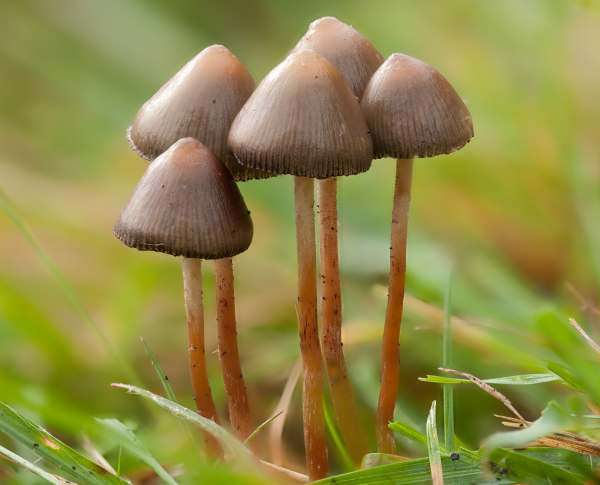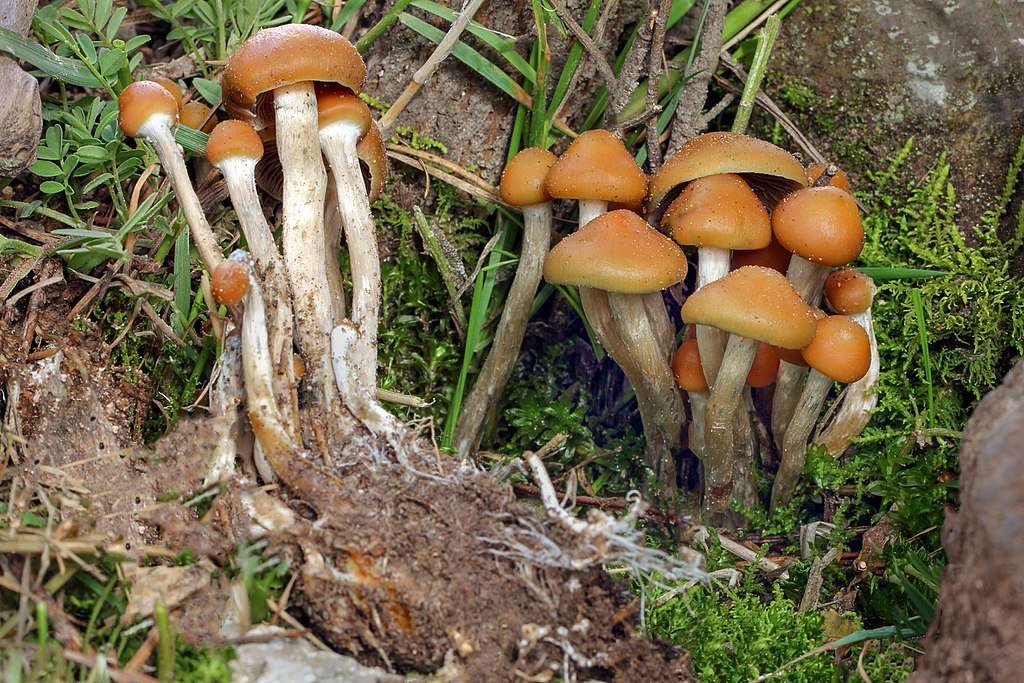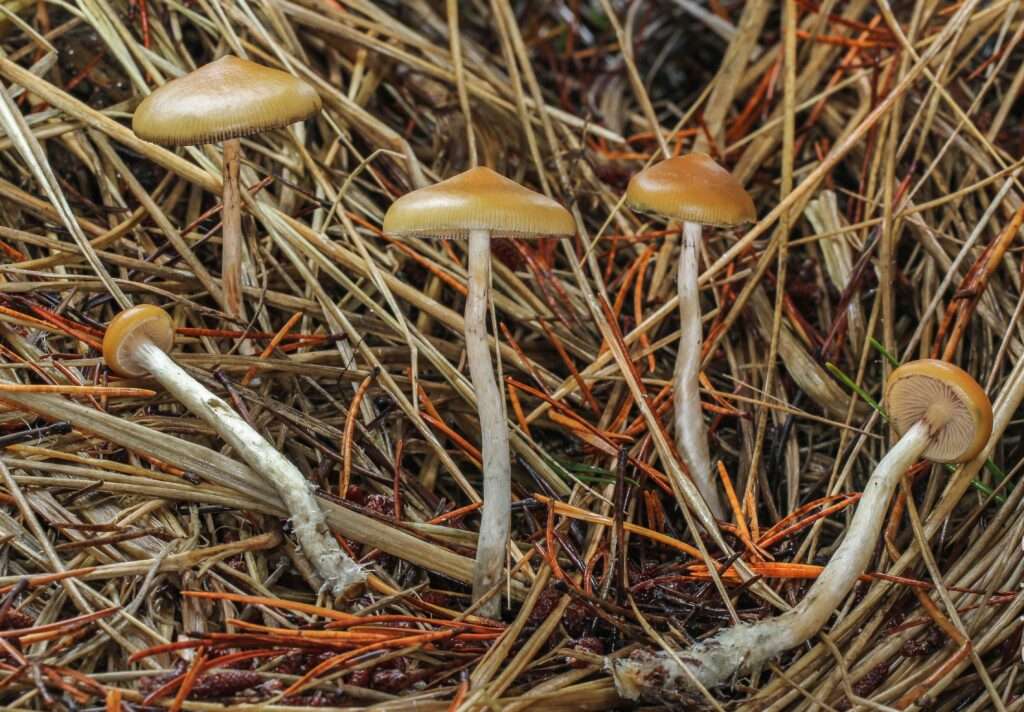
Scientific name
Stropharia ambigua
Description
The cap has a smooth finish, is slimy when damp, and is yellowish. It is 3 to 15 cm wide, obtuse to convex, and becomes flat or elevated with age. There can be slivers of white veil dangling from the edge. The meat is thick, tender, and white. The gills start off being a light gray color before fading to a purplish-gray or purplish-black color. With maturity, the gills can separate from the stipe. The stipe is hollow or filled, measuring between 2 and 18 cm in length. It may have strands of the white veil and, less frequently, a bittering hanging from it. The veil is delicate and white.

Habitat
Stropharia ambigua emerges in late autumn as a solitary to dispersed mushroom or in clusters on rich humus, generally under conifers. Along the Pacific Coast, it is also present alongside alder and other hardwoods. This species is most abundant in western North America. It is commonly discovered in regions that have been disturbed. The species will populate outdoor mushroom beds once a main saprotroph has finished decomposing wood chips. It prefers a chilly, moist climate.
Uses/Importance
Some authors assert that questionable Stropharia can be eaten. Some people say it’s poisonous. This may be another instance of a mushroom species that are safe to eat in some situations and not others, or that causes responses in sensitive people but not everyone. Some people enjoy the highly earthy flavor, but others find it to be quite unappealing. It has been established that questionable Stropharia helps produce dyes; according to how it is treated, it yields a variety of gray greens and browns. Some people believe it has therapeutic properties, although there has been no research study on the subject.
Table





